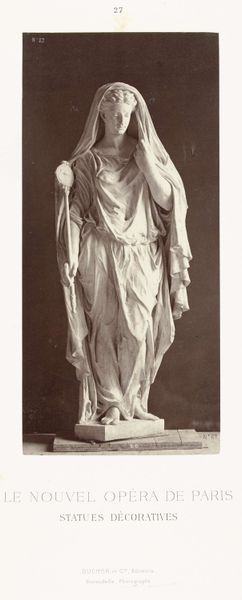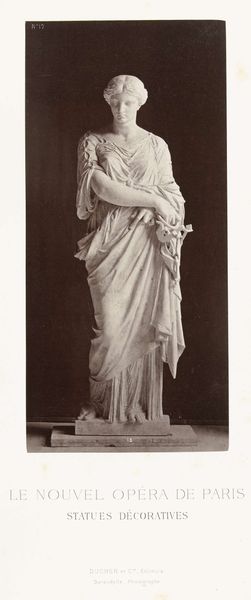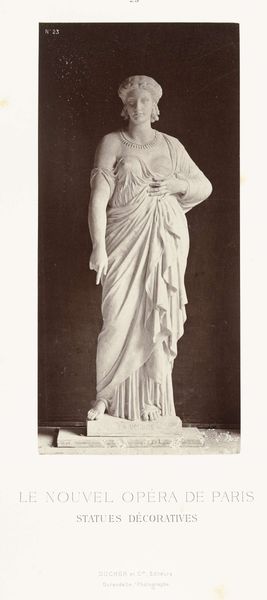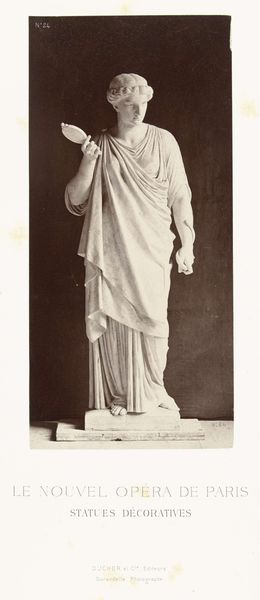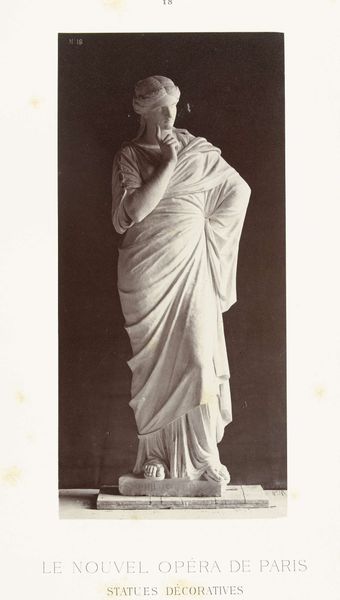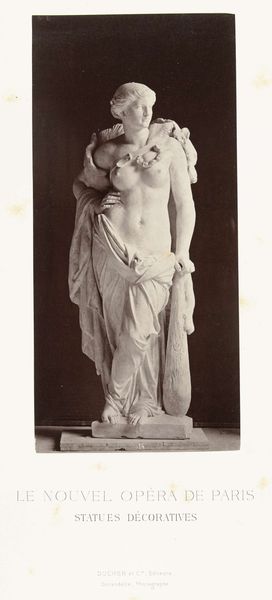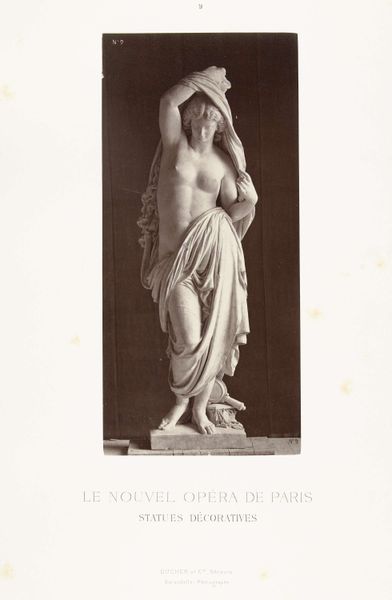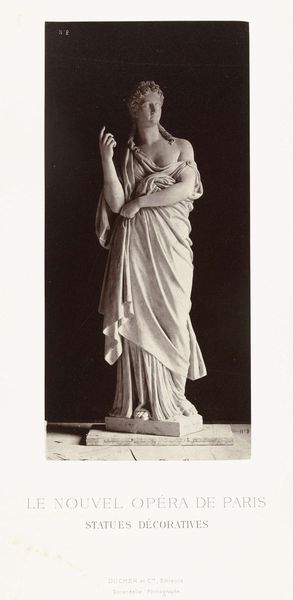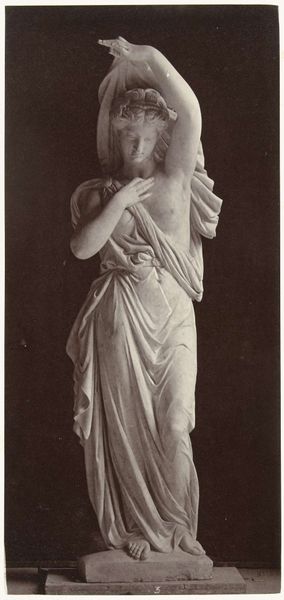
Marmeren beeld van een vrouw in hooggesloten jurk, met haar rechterhand wijzend op een wereldbol en haar linkerhand wijzend in de lucht. c. 1878 - 1881
0:00
0:00
Dimensions: height 275 mm, width 128 mm, height 620 mm, width 438 mm
Copyright: Rijks Museum: Open Domain
Curator: Well, isn’t this an elegant image? Louis-Émile Durandelle captured this photograph between 1878 and 1881. It depicts a marble sculpture of a woman, regally posed. Editor: Yes, "regal" hits the mark. I am immediately struck by the tactile quality rendered in the photograph. The way the light catches on the marble, creating those deep shadows in the drapery… it really emphasizes the material and labor involved in producing this sculpture. You can almost feel the coolness of the stone. Curator: Precisely! And consider the context. This gelatin silver print reproduces a sculpture that was part of the decorative program of the New Paris Opera House. Durandelle meticulously documented the construction and ornamentation, giving us invaluable insight into the Opera's role in Parisian society and civic identity at the time. Editor: Right, these sculptures and photographs weren’t just aesthetic objects. The creation of this kind of artwork involved entire studios. Where did Durandelle source his photographic materials, what was the division of labor, who were the audiences consuming these images? Also the material conditions of those laborers; imagine carving marble day in, day out. Curator: Absolutely. And it reflects the ambition of the French Third Republic to establish its cultural prestige. We must acknowledge, of course, that the Opera, while conceived as a public amenity, also became a stage for social and political elites. Editor: Speaking of staging, the way the figure is presented —her raised hand pointing towards the sky, the other resting on the globe — it speaks volumes about this period’s imperial aspirations. The artist clearly emphasizes power relations and how social and political orders play out through materiality. Curator: And to circle back to its materiality: the very fact that we're viewing this marble statue as a *photograph* is also rather crucial. It served to disseminate images of French cultural achievement to a far wider audience. It created accessibility, but always at a distance, filtered through Durandelle's lens and process. Editor: Looking closely, the play of light makes one even consider the extraction, transportation and treatment of the material: it speaks about a will and ways to exert and express power via sculpture. The print itself also becomes another item of exchange to be consumed. Fascinating! Curator: A lot to think about, really, but such illuminating points—a view to broader distribution beyond its place of display. Editor: Definitely. And looking at materiality exposes the intertwined economic and cultural currents beneath its polished surface.
Comments
No comments
Be the first to comment and join the conversation on the ultimate creative platform.


